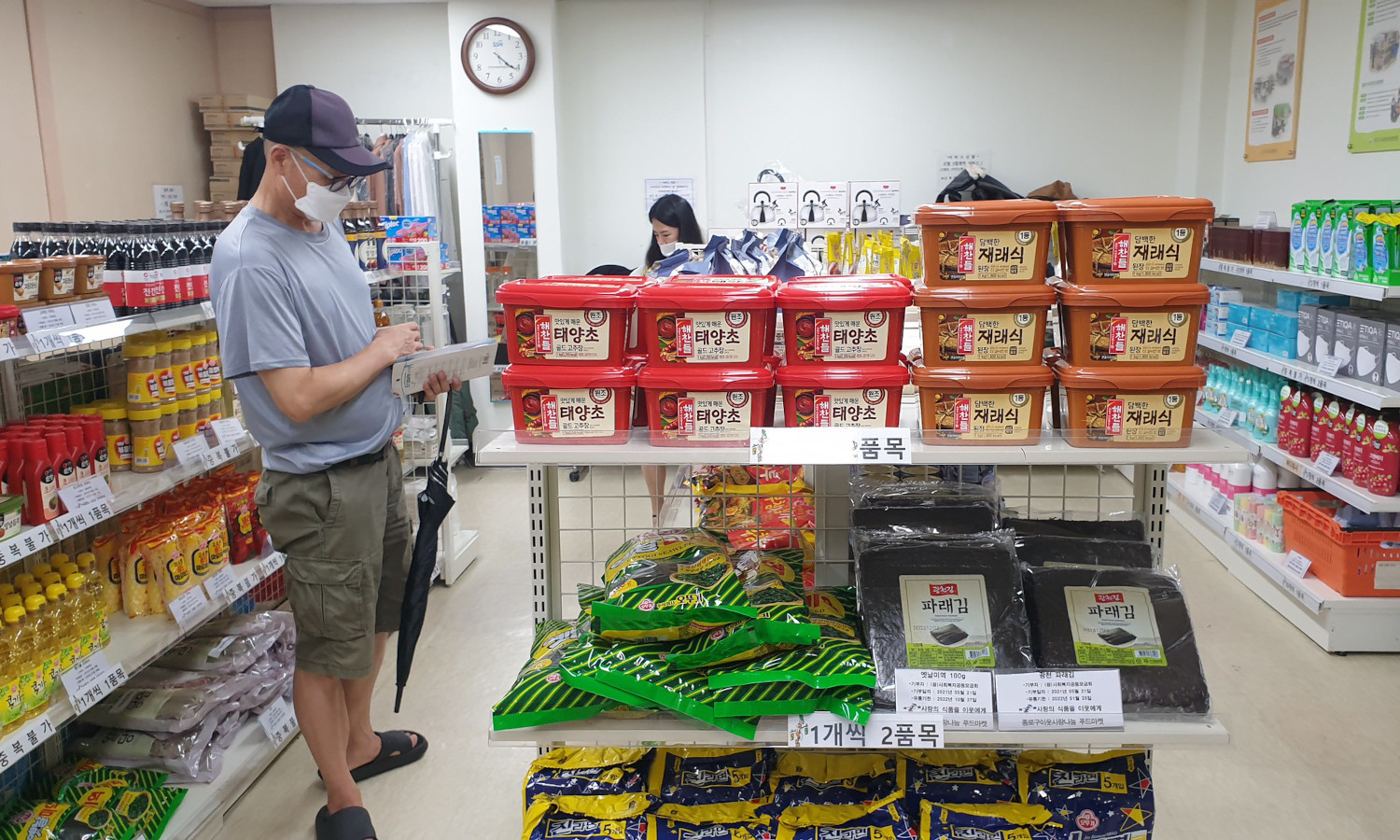The Global FoodBanking Network (GFN) reports that 40 million people across 44 countries accessed services from within its network in 2020, a 132 percent increase compared to the previous year. Food banks around the world are working to reshape traditional models of food distribution and cultivate creative solutions that are mindful of clients’ agency and dignity.
“Food banks and the programs and projects they create are culturally unique. The framework of their idea can be exported but it will then need to be reassembled in whatever local context it lands in,” Craig Nemitz, GFN’s Asia-Pacific Field Services Director, tells Food Tank.
Traditional food banks follow a model that provides assistance in the form of pre-packed bags or boxes based on available food supplies. But this structure may disempower those in need. Foods may also fail to align with recipients’ cultural, religious or medical requirements, according to recent research published in BMC Public Health.
In contrast to traditional food banking, Chile’s Red de Alimentos, recently inaugurated the Despensa Social, which translates to social pantry. In the city of San Bernardo, the pantry aims to provide food, personal hygiene, and cleaning supplies for adults over 60 in vulnerable situations, giving them greater agency to choose a variety of products.
Taking a similar approach, the Korea Foodbank based in Seoul recently introduced a food market model throughout several major metropolitan locations. Like Chile’s Despensa Social, the Korean food market functions as a convenience store, allowing people to choose what they need.
Those who visit the Despensa Social receive a specific time they can access the pantry and can pick up eight to ten kilograms of food a week, like fruits, vegetables, yogurt, and beans, as well as personal hygiene products. Along with nutritional support, the Despensa Social works to address the safety and health of seniors, around 80 percent of whom receive a pension less than the minimum wage of US$450 a month in retirement.
Like Chile’s Despensa Social, the South Korean food market model also aims to “give some measure of control back to the people it serves,” Nemitz tells Food Tank.
In South Korea’s major metropolitan areas where the food markets operate, local food banks donate products and clients receive a government-issue card with preloaded credits. The size of a household and participants’ income level determine how many credits they can receive on the cards, and those credits can then be exchanged for food and other grocery items.
This food market model evolved from a desire to make food markets more accessible and affordable for elderly people. South Korea’s elderly population faces a poverty rate of 43.2 percent as of 2019, the highest among member states of the Organization of Economic Cooperation and Development (OECD).
María José Vergara, Social Management Officer for Chile’s Red de Alimentos, tells Food Tank that the nonprofit’s social pantry model seeks to generate a “triple social, economic, and environmental impact,” aiming to “avoid waste, ensure the dignity of people, and guarantee their right to access food and essential products.” Chile’s elderly population lacks coverage from social assistance programs and faces challenges accessing basic needs.
According to the World Bank, Chile is one of Latin America’s fastest-growing economies, and South Korea ranks as the tenth largest economy in the world. But in Chile, 30 percent of the population is economically vulnerable and faces deep-rooted inequality. In South Korea, the Organisation for Economic Co-operation and Development reports that the country’s relative poverty rate reached 16.7 percent between 2018 to 2019, the fourth-highest rate among its 38 member nations.
Vergara tells Food Tank that the role food banks play “as actors of change must be related not only to delivering products, but also taking actions that add value to our mission.”
Articles like the one you just read are made possible through the generosity of Food Tank members. Can we please count on you to be part of our growing movement? Become a member today by clicking here.
Photo courtesy of The Global FoodBanking Network







